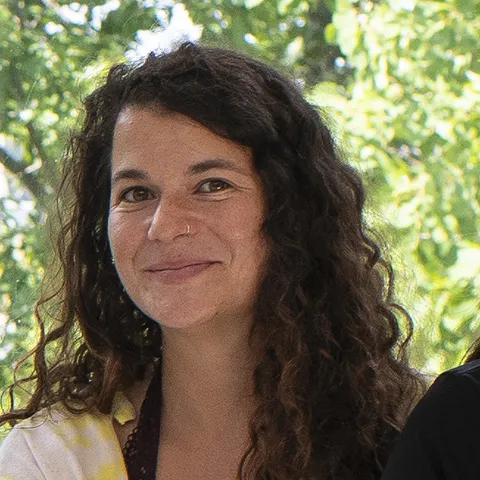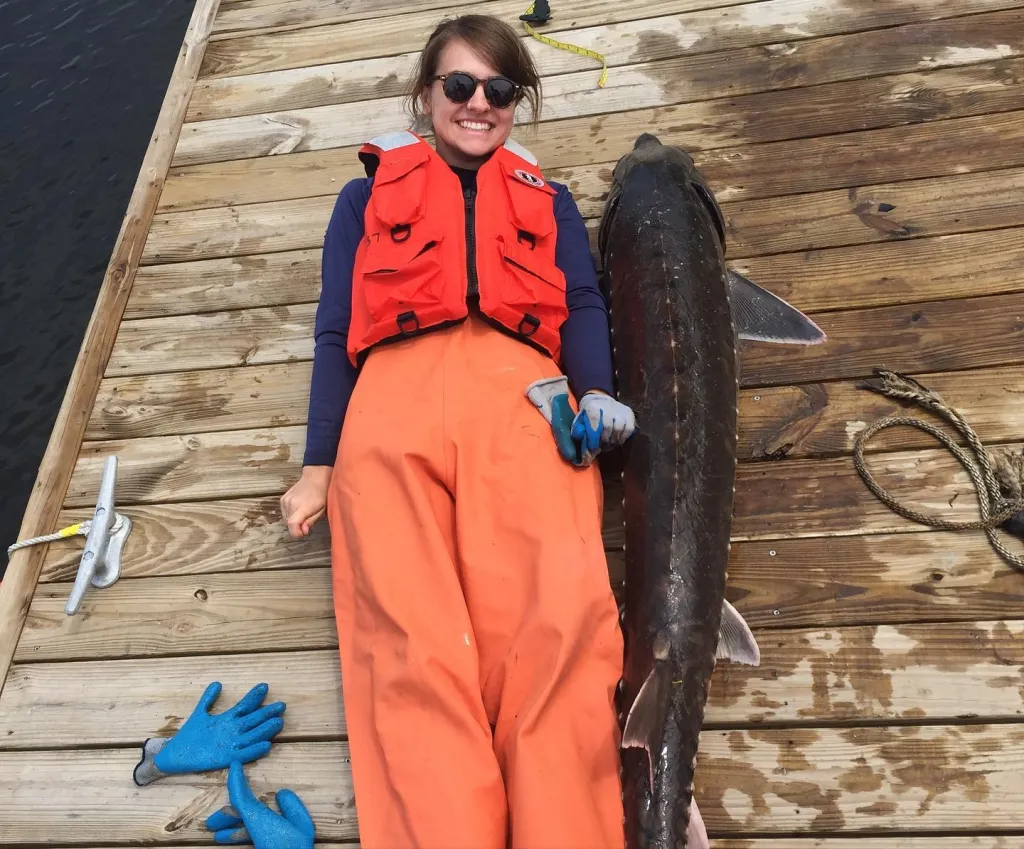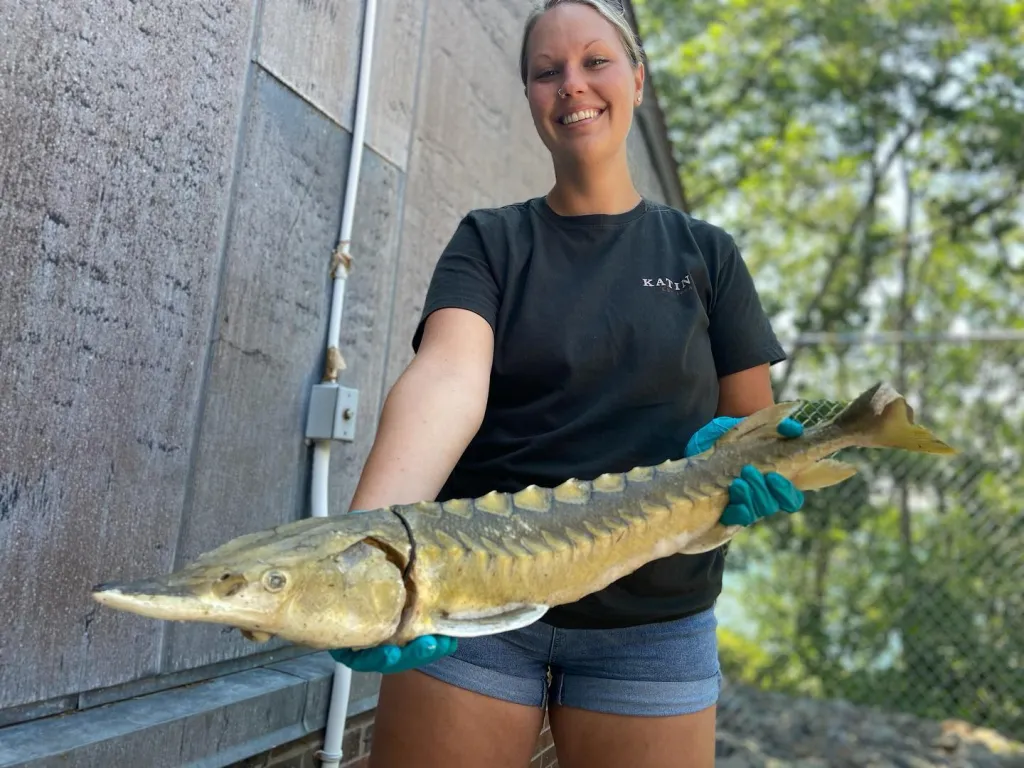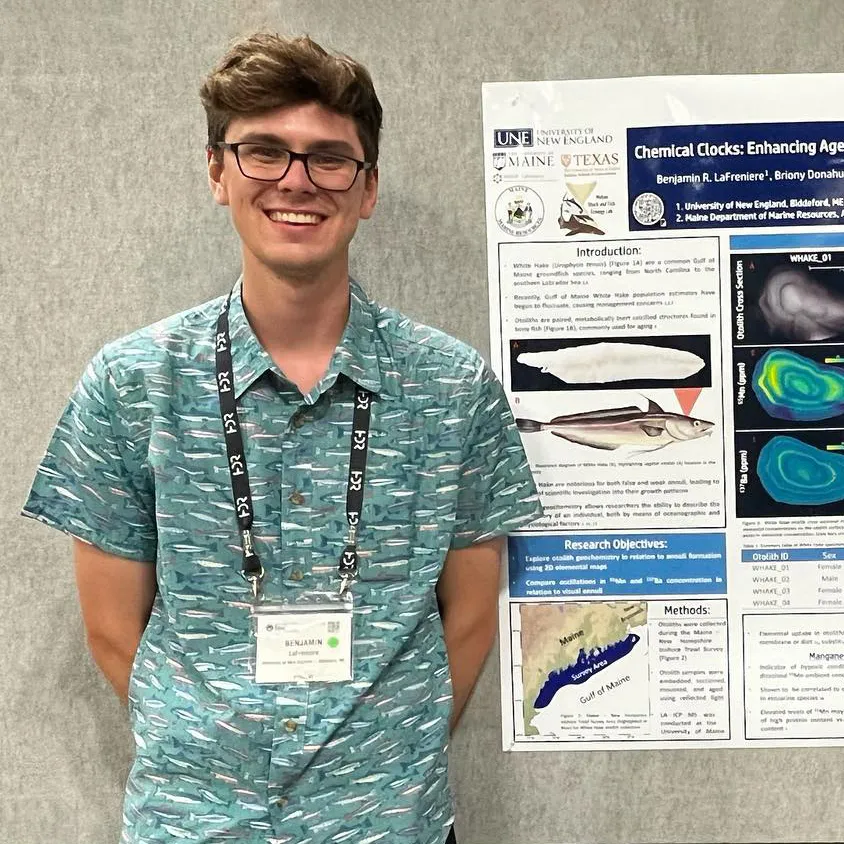Student Experiences: Mohan Lab

Addie Binstock, M.S. ’23
For my research, I’m studying the post-release mortality of four commonly caught shark species within one of the largest shore-based recreational fisheries in the United States. I am specifically interested in this because I previously worked in a shark-tagging program in Australia.
One of the big components of marketing the Australian study to the public explained that it was a non-lethal study. However, we didn't deploy tags that would confirm that each shark we released survived. We just said that they didn't die on the vessel. I knew that there was something a little bit fishy about that, no pun intended.
So now at UNE, I’m studying what actually happens after these sharks are released so that we can better understand what the impacts of catch-and-release fishing are. We’re partnering with recreational shore-based fishermen to deploy tags on four different species of sharks. We then look at the tag data to figure out which sharks survived the process and which environmental characteristics may influence their survival. One thing we found is that when the water is warmer, it’s harder for those sharks to recover.

Abigail Hayne, M.S. ’23
I am a second-year graduate student investigating elemental chemistry of shark vertebrae as a tool to better understand their age, growth, and ecological connectivity. Currently, I am in the final stage of analyzing the relationship between the chemical composition of blacktip shark (Carcharhinus limbatus) vertebrae and vertebral band pairs [see paragraph below for explanation]. This research will aid in our understanding of age information, which is critical to management and conservation efforts.
In 2019, I graduated with my bachelor’s degree in Marine Science from UNE, where I first got experience conducting research with sharks. As an undergraduate working as a research assistant, I was first exposed to shark vertebrae. Vertebrae in sharks are interesting because you can cut a cross session out of it. Then, under a microscope, you can count the rings of the vertebrae to determine their age, the same way you would for the rings of a tree.

Alexa Cacacie, M.S. ’23
Currently, I am working on an acoustic telemetry tagging study with striped bass and sturgeon in the Saco River. The goal of this study is to establish an array of receivers and tagged fish in the Saco River Estuary system to determine where the fish go seasonally throughout Maine. At the same time, I am also working on using fish scales as natural tracers to help determine the life history of striped bass in Maine and beyond. The goal of the study is to provide more information on the use of fish scales as a natural tracer of life history (where the fish were born, where they have been throughout their lives), instead using otoliths (ear bones), which necessitate killing the fish to examine.
Due to sensitive populations of both fish, acoustic tagging allows us to see what fish are using our estuary as a home—or even as a spawning ground. Since populations of striped bass have been in decline recently, this data is extremely important for use in population management for recreational fisheries. I will also be looking at scale chemistry as a non-lethal chemical tracer for striped bass to determine their life history.

Ben LaFreniere, M.S. ’23
I am a second-year 4+1 graduate student investigating the ecology of white hake (Urophycis tenuis) in the Gulf of Maine. The first chapter of my thesis concerns the investigation into white hake age and growth using otoliths (inner ear bones found in bony fish), as well as the chemistry of their otoliths and its relation to age. The second chapter of my thesis revolves around the abundance of white hake in the Gulf of Maine over the past 22 years, correlating environmental variables to preferred habitat.
I worked with Dr. Mohan as an undergraduate student on a similar study with white hake. Traditionally, with white hake, it has been hard to determine age. Their bands are not super clear. As a result, researchers have avoided studying them due to these limitations. Since they are so prevalent in the Gulf of Maine, it’s important that we get a better understanding of them. I’m ready to be one of the first people to take on this challenge while studying at UNE.
